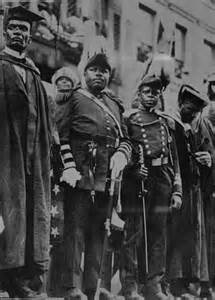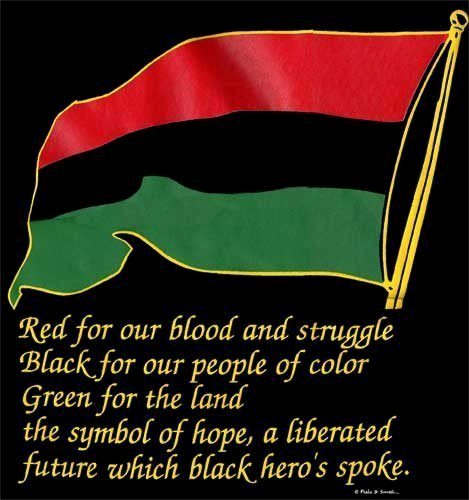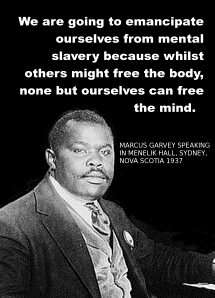Rise and Fall of Black Moses and the UNIA ~~~
In 1920, the UNIA was at its peak. There were UNIA chapters all over the United States, Caribbean, and Africa; as long as there was a sizable black population, by the early 1920s, that place was bound to have a UNIA chapter. Marcus Garvey and the UNIA held an international convention at Liberty Hall on August 13, 1920. This convention housed delegates from twenty-five countries who paraded through Harlem, 50,000 strong, in a show of Black Power, ending the event in a very flamboyant fashion. During the convention, the UNIA adopted the Pan African flag as a part of the Declaration of Rights—specifically number 39. It states “…That the colors of the Negro race [are] Red, Black, and Green.” In 1900 a song called “Every Race Has a Flag but the Coon” was released, and it was with this in mind that Marcus Garvey and UNIA adopted their flag: Red is for “the color of the blood which men must shed for their redemption and liberty,” Black symbolizes “the color of the noble and distinguished race to which we belong,” and green is for “the luxuriant vegetation of our motherland.”
At the time Ethiopia (then Abyssinia) was the only country in Africa free from colonization from Europe, and Marcus Garvey (mistakenly) thought that the Ethiopian flag was red, black, and green. By the time he realized his error, it was too well established to change. Clearly he held sway amongst the black community; however, he was not nearly as good a businessman as a social and political activist. He founded the Black Star Line (like the White Star Line shipping company) in 1919 to establish Black commerce, connect the Negro world, and take Negroes (who wanted to go back) to Africa. Selling stocks to the public through the mail, he solicited around $600,000 (No one can be sure because his businesses always had poor record keeping). The Black Star Line even had a ship renamed the SS Frederick Douglass. However, thanks to expensive repairs and his overall lack of knowledge on how to run a business, the Black Star Line failed. The same year he also founded the Negroes Factories Corporation to establish Black independence. The Negro Factories Corporation operated three grocery stores, two restaurants, a printing plant, a steam laundry, and owned several buildings and trucks in New York alone.
Garvey worked hard to have Negroes in America be autonomous,
but with White racists in power, he was bound to crumble.
Marcus Garvey was not assassinated, but he was regarded as a dangerous Black nationalist. So naturally, he and four others were charged with mail fraud. The Black Star Line had advertised a ship that they had but never became seaworthy. However, since they had solicited funds for it and the government was eager to have him expunged, they brought him up in charges. The company’s horrible record-keeping practices did not help. Ultimately, since he chose to defend himself but held no ethos with the court, he was the only one charged. So after being convicted and serving several years in prison, he was deported as an undesirable alien.



